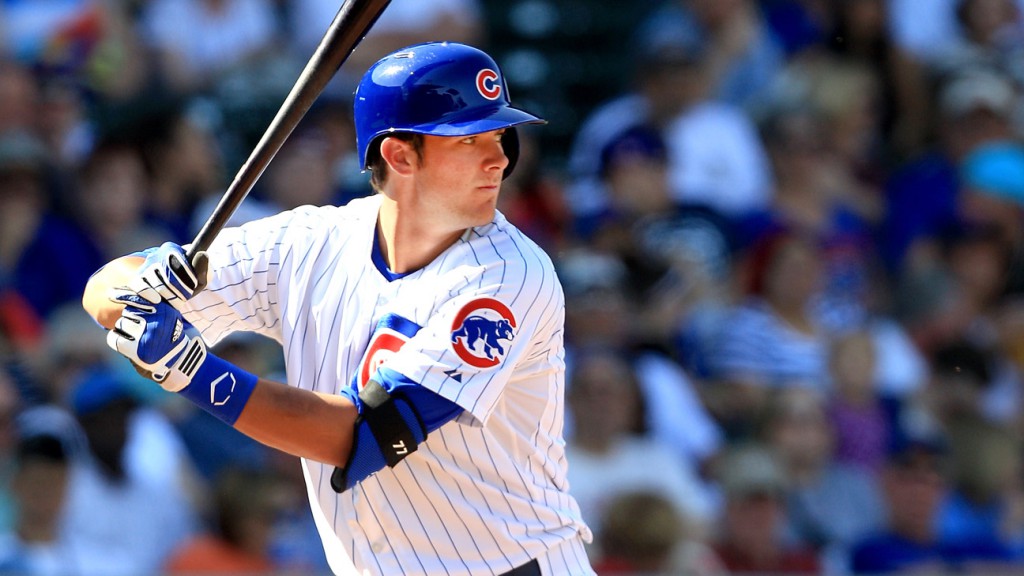One of the hardest things to do as a scout, DFS player, or just an everyday fan is to judge a young player during his rookie season. It’s especially difficult when dealing with a larger-than-life prospect like Kris Bryant because so often there are no fair comparisons.
There are so many more adjustments to make at the big-league level, yet new players routinely get written off or overhyped too quickly. It’s premature to make any official ruling on Bryant, but let’s evaluate his first 350 plate appearances.
Just by looking at his accolades you’ll quickly realize that we’re dealing with a special player: Rookie of the Month, All-Star, Home Run Derby – all within his first 80 games.
He has demonstrated a polished approach at the plate, exhibiting patience where most young hitters are anxious. His early BB% (18.2%) might have been an outlier, but is further proof of his maturity. His BB% and ISO have since regressed to around 13% and .200, respectively.
But a player’s scouting report and past accomplishments don’t carry much weight in the world of daily fantasy, as it’s a constant game of comparisons. For some context on Bryant’s season to this point, I pulled data on the players that qualified within $200 of his average salary and 0.1 fantasy points per game of his average score.
It turns out Starling Marte represents an excellent player comparison for Bryant, producing very similar stats in 8/10 categories.
The main difference between the two is Marte’s speed and Bryant’s walk rate. Aside from that, Bryant’s 2015 season is nearly a replica of Marte’s past calendar year right down to their identical plus-minus.
The Todd Frazier comparison is also worth noting and provides some useful context for evaluating Bryant among third basemen. Bryant ranks as the fifth-best third baseman in the Fantasy Labs database (behind Miguel Cabrera, Alex Rodriguez, Josh Donaldson, and Frazier) but let’s take a look at his recent numbers before you lock him into your lineup.
His wOBA has slipped each month, down from .390 in Mar/Apr to .333 in July. It’s not uncommon for rookies to struggle as Major League pitchers and coaching staffs begin to figure out how to exploit any and all weaknesses.
It appears as though Bryant has become a little pull-happy – pulling 53.3% of batted balls in July compared to 38.8% overall in the first half.
However, in his case we’ll consider this a very good thing.
Bryant has a tendency to do two things when he pulls the ball: hit grounders (.333 average on GB) and hit home runs (8 out of his 11). This all culminates in a .610 wOBA on 76 pulled balls as well as the following:

All of this auspicious batted ball data hints at regression despite the fact that his BABIP across three pro seasons is hovering around .400.
We may be in the midst of Bryant’s first slump, as he’s hitting just .125 over his last nine games. His outcomes at the plate suggest that some blame can be placed on BABIP regression, but the main culprit is Bryant’s struggle to make contact. Over this nine game span, Bryant has struck out 14 times in 32 at-bats.
Strikeouts have plagued Bryant during his rookie season, as his 29.8% K-rate ranks as the sixth-highest in baseball. Contact has always been the main flaw in Bryant’s game, as he’s struck out in about ¼ of his at-bats throughout his pro career.
It’s important to remember that he’s still only 23 with just 350 Major League plate appearances under his belt. 2015 may only be a glimpse of what’s to come as Bryant develops into one of the games brightest stars.
As for the rest of this season, we may see Bryant endure a few slumps, but he can carry a DFS lineup when he’s playing well.
The most important thing to keep an eye on with Bryant is his strikeout rate. When he’s making contact, there isn’t a price tag that’s too high.



